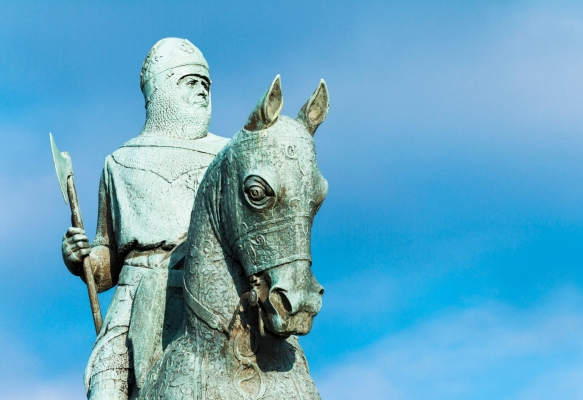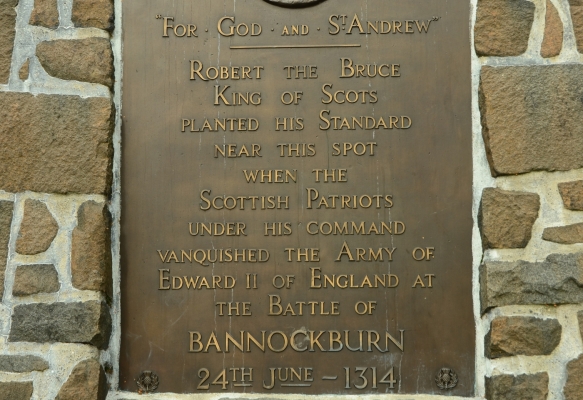Robert the Bruce and the Battle of Bannockburn
9th September 2024
Scotland’s past is rich with tales of valor, and one of the most famous is the legacy of Robert the Bruce and the iconic Battle of Bannockburn in 1314. It stands out as one of the most pivotal moments in Scottish history – a monumental event that formed a major turning point in the First War of Scottish Independence.
Today we are going to tell the story of one of our greatest heroes, and the impact he still has on Scottish culture today.
Who is King Robert the Bruce?
Robert I (11 July 1274 – 7 June 1329), popularly known as Robert the Bruce, hailed from a noble family with a legitimate claim to the Scottish throne. Following the deaths of Alexander III and Margaret, Maid of Norway, Robert's grandfather nearly ascended to the Scottish throne in 1292. However, John Balliol was crowned king instead.
The Bruce family possessed extensive lands in England, leading them to occasionally support the English King, Edward I. After Edward I defeated the Scottish army at the Battle of Dunbar and deposed King John Balliol in 1296, Bruce joined the rebellion (launched by William Wallace) against Edward's rule.
After William Wallace went into hiding following the defeat at the Battle of Falkirk, Bruce was appointed Guardian of Scotland. However, Bruce harbored greater ambitions—he aspired to be king.
In 1306, he met his chief rival for the Scottish throne, John Comyn, at Greyfriars Monastery in Dumfries to discuss the kingship and their resistance against Edward I. A confrontation ensued, resulting in Comyn's death. With the church's backing, Bruce was crowned King of Scots later that year.
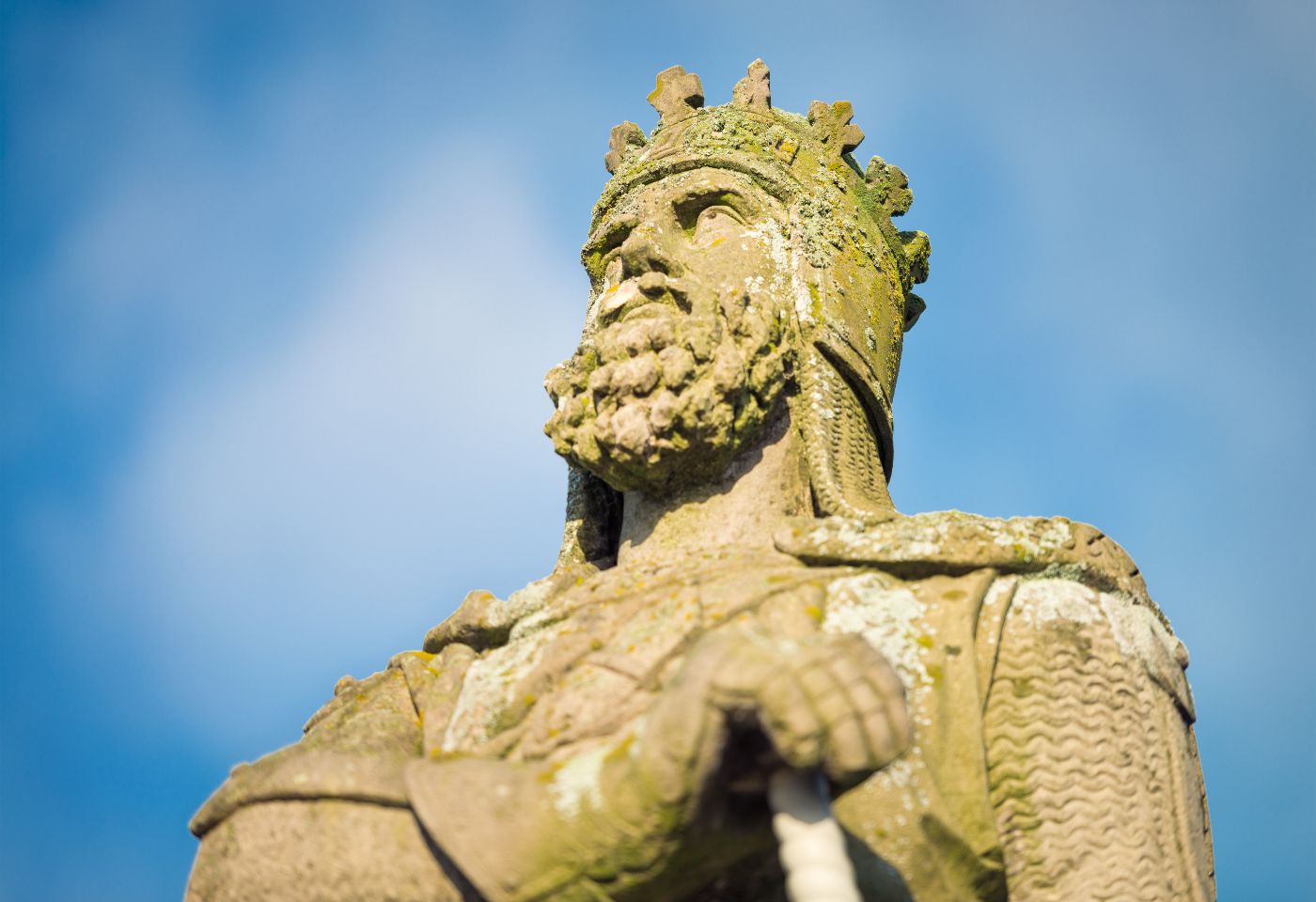
Robert the Bruce - George Clerk, Canva
The Battle of Bannockburn
The Battle of Bannockburn one of many brutal battles in Scotland’s fight for independence from the English, in the First War of Scottish Independence. It took place on 23-24th June 1314 when an army led by Robert the Bruce, King of Scots, faced off against King Edward II of England’s soldiers.
In 1313, Bruce decreed that all supporters who were still loyal to the then-ousted Scottish king, John Balliol, to acknowledge him as their new king or else they would lose their lands. In retaliation, King Edward II invaded the Scottish lands, eventually taking over Stirling Castle, a Scots royal fortress that was used as a staging point for English forces. Bruce would lay siege to it, ultimately resulting in another invasion by the English to relieve the siege with an army of 25,000 infantry soldiers and 2,000 horses from England, Ireland, and Wales. This was the largest army to ever invade Scotland, and it was set to crush the 6,000 Scottish soldiers that stood before them.
The Scottish army was no doubt outnumbered; a lesser commander would have retreated or surrendered, but not Robert the Bruce! Despite overwhelming odds, he utilized brilliant strategies. King Robert organized his foot soldiers into large, tight formations called schiltrons, and told them to point their long spears outwards while his his archers under tree cover. He waited patiently for the English to make a mistake, and as they began to cross a river, the schiltrons ambushed them, while a large group of ‘helpers’ ran toward Edward’s army to make them think that the Scots had a much larger army than they actually did.
The English soldiers, trapped in the steep river banks and running water, began to panic. Robert the Bruce’s army killed thousands of English soldiers, with mere hundreds escaping back down south.
While the Battle of Bannockburn didn’t outright win the First War of Scottish Independence, it was a decisive victory that eventually led to the conclusion of a 32-year war. The triumph over the English bolstered Scottish morale, solidifying Robert the Bruce’s leadership, legitimizing his kinship, and ultimately freeing his kingdom from English rule. The momentum from the battle eventually led to the Treaty of Edinburgh-Northampton in 1328, where England officially recognised Scotland’s independence.
The Legend Robert the Bruce and the Spider
One of Scotland’s most famous legends is that of Robert the Bruce and the Spider. Prior to the Battle of Bannockburn, the legendary King of Scots had faced many defeats and was forced into hiding. According to legend, during a low point in his spirits, Robert took refuge in a cave. There, he observed a small spider trying to weave a web.
The spider tried and failed multiple times. Each time it fell, it climbed back up to try again. Eventually, the spider's silk held, and it succeeded in spinning its web.
Robert the Bruce saw his own struggle mirrored in the spider's persistence. Inspired by the spider's determination, he resolved to return and fight the English despite the daunting odds.
Visiting the site of the Battle of Bannockburn
While the exact location of the Battle of Bannockburn is unclear, we know that it took place somewhere near Stirling. Over the years, monuments and attractions were built around the area to commemorate the legendary battle, but there are also other locations that are worth exploring if you find yourself in Stirling.
Bannockburn Visitor Centre
Previously known as the Bannockburn Heritage Centre, the Bannockburn Visitor Centre offers an immersive digital recreation of the battle up close, allowing visitors to stand shoulder to shoulder with Robert the Bruce during his battle. It offers detailed recounts of how the warriors, pages, knights, and civilians became involved with the conflict, and the role they played in the battle. Visitors will also get to learn more about both Robert the Bruce and King Edward II, their motivations, and even their strategies that would ultimately change Scotland forever.
Outside the visitor center is a stunning landscape with restored commemorative monuments, such as the iconic statue of Robert the Bruce that was cast in shimmering bronze by Pilkington Jackson. It’s easy to imagine the echoes of clashing weapons and war cries of loyal warriors as you tour the grounds and embrace the sweeping fields.

Battle of Bannockburn - Alanfin, Canva
Other Historical Sights Around Stirling
There is so much more to Stirling than this famous battle sight, its central location has made it a key stronghold throughout history.
Stirling Castle
Stirling Castle is one of Scotland’s greatest stone castles, serving as one of the most important components to the First War of Scottish Independence. It was under siege by Robert the Bruce, and relieving it was the original objective of the English army before they were routed by the Scottish forces.
Stirling Castle offers guided tours to help people discover the history of the area, and there are also audio guides for visitors who prefer to explore at their own pace. Visitors can explore The Great Hall, the largest medieval banqueting hall ever built in Scotland, and also discover The Royal Palace, the opulent living quarters that once housed royalty.
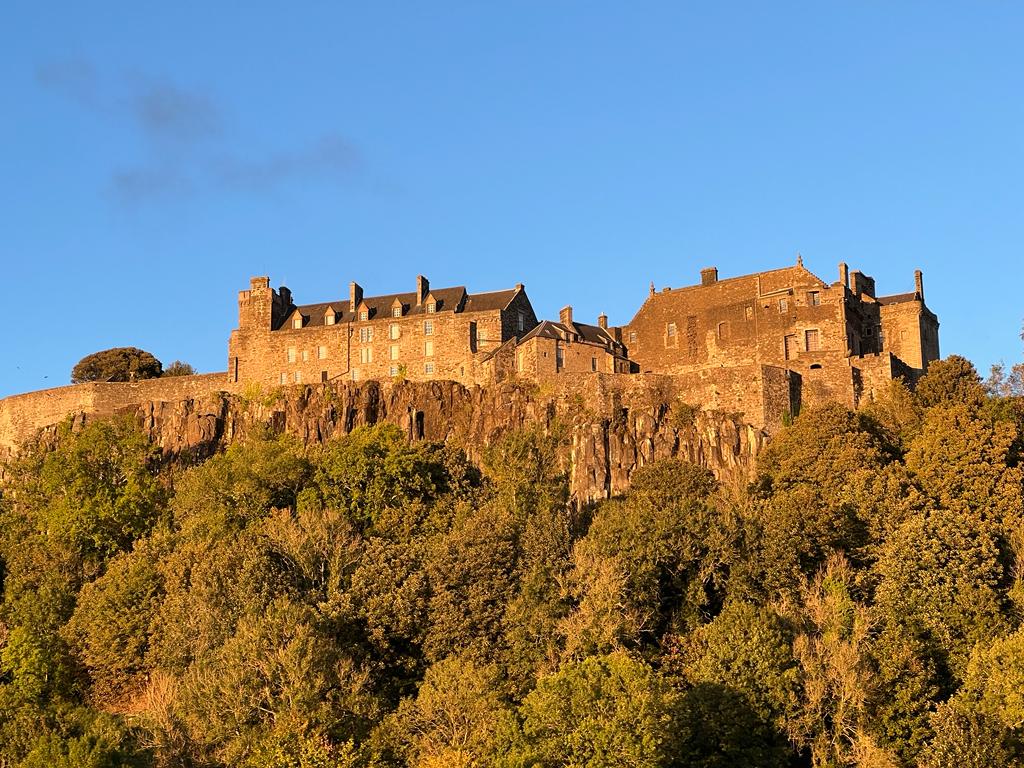
Stirling Castle - Driver Terry
The Church of the Holy Rude
The Church of the Holy Rude, found in the heart of Stirling, has survived over 900 years of history and battles, becoming a remarkable historical gem that still bears many scars. The church boasts incredible Gothic architecture with beautiful stained glass windows and an ancient graveyard with centuries of history etched into every stone.
To this day, the church is still an active place of worship, operated by a friendly congregation of the Church of Scotland. Regardless if you’re a religious person or not, the Church of the Holy Rule is an iconic landmark that deserves your attention if you’re exploring Stirling.
The Wallace Monument
The Wallace Monument is a striking tower commemorating Sir William Wallace, another legendary Scottish hero. Erected in 1869, the 220-foot Gothic Revival structure stands on Abbey Craig Hill, offering breathtaking panoramic views of Stirling and the Ochil Hills. Visitors can climb its 246 steps to explore three exhibition chambers showcasing Wallace's life, the Battle of Stirling Bridge, and Scotland's fight for independence. The monument also features the iconic Wallace Sword, a powerful symbol of his enduring legacy.
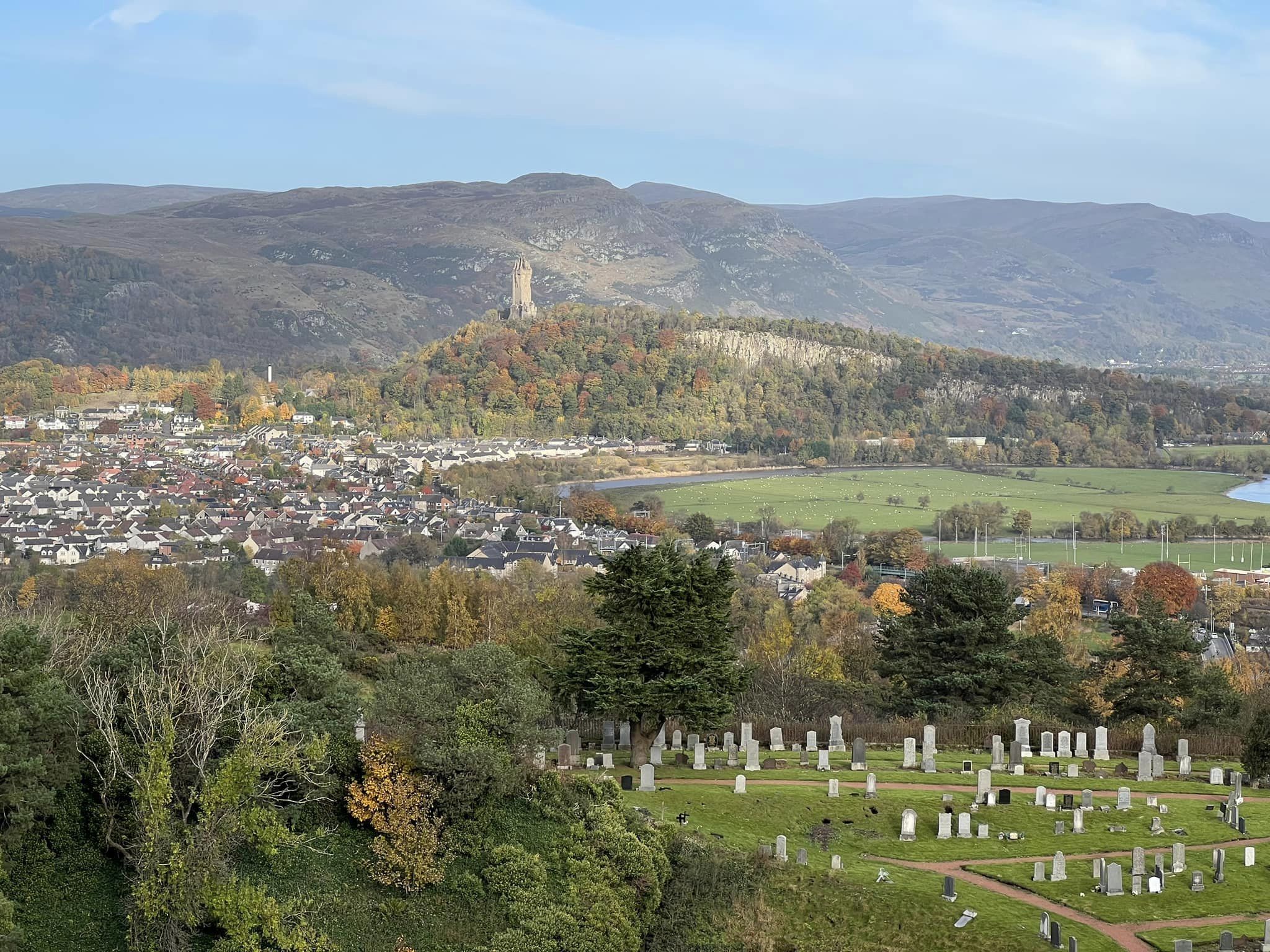
View of Wallace Monument from Stirling Castle - Driver Terry
Escorted Vacations in Stirling
Tour the Stirling Highlands and Lowlands, iconic locations where many battles from not just Robert the Bruce, but also William Wallace took place as they fought to defend Scotland from invaders. Visit landmarks such as the legendary Borestone, the supposed location where Robert the Bruce planted his standard before marching to battle. There’s also the iconic statue of Robert the Bruce on horseback, which served as a symbol of victory in the war against the armies of King Edward II.
Uncover the history of the battle and learn more about the weapons and strategies used by the armies of both Robert the Bruce and King Edward II. Enjoy a wealth of cultural and historical insights, and discover more about the legacy of Robert the Bruce and the Battle of Bannockburn on one of our tours….
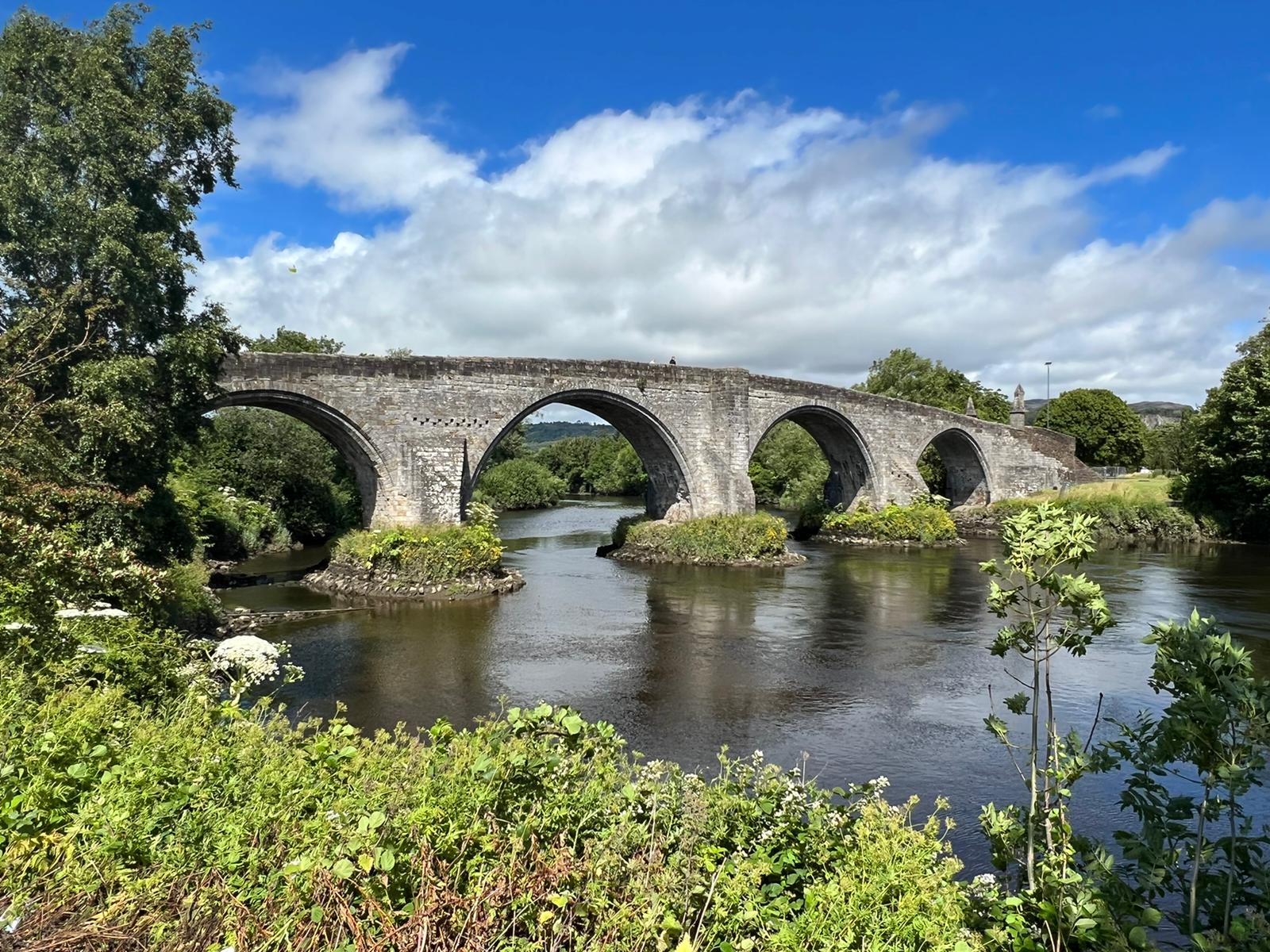
Stirling Bridge - Driver Terry
Recent articles
